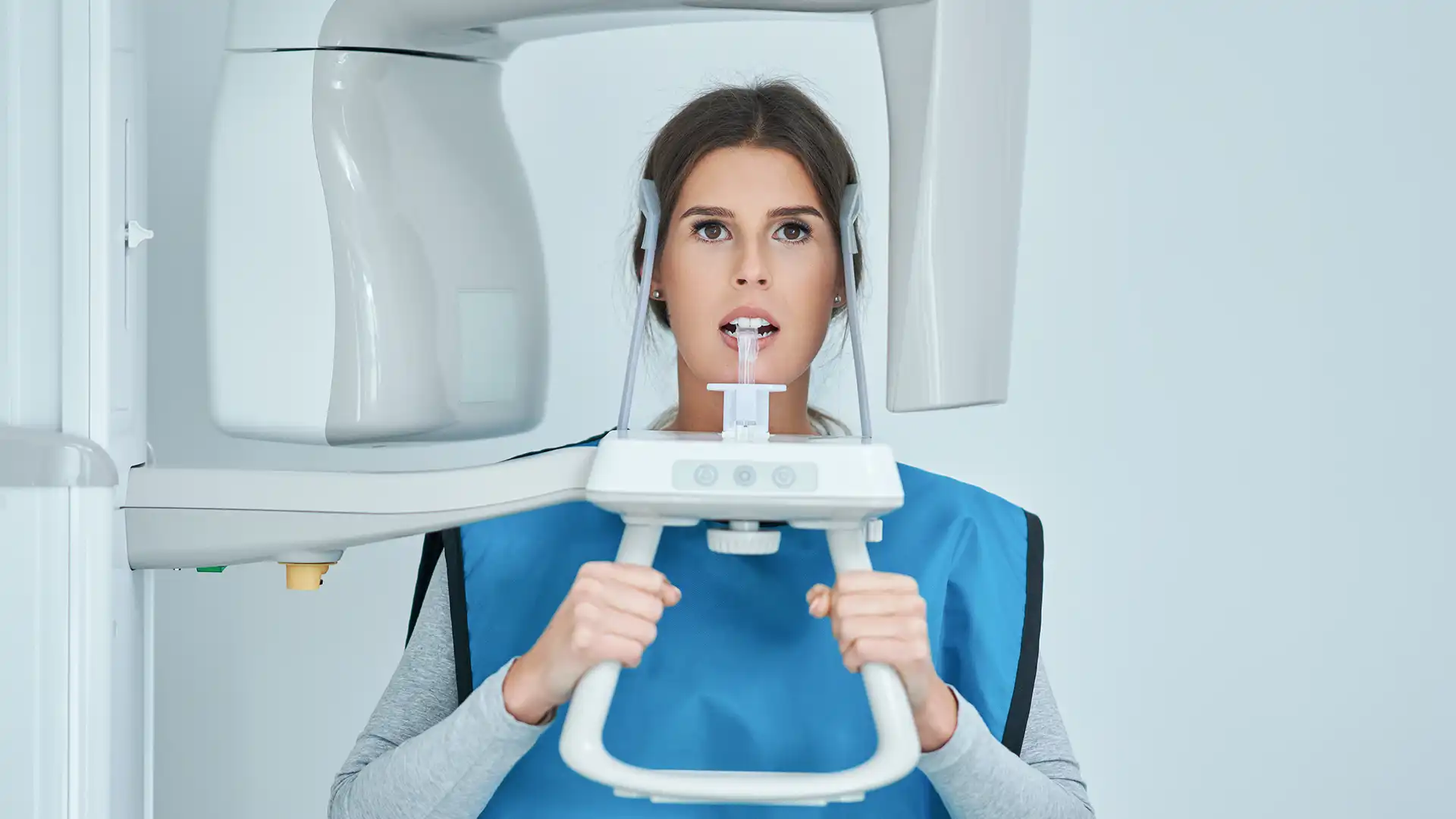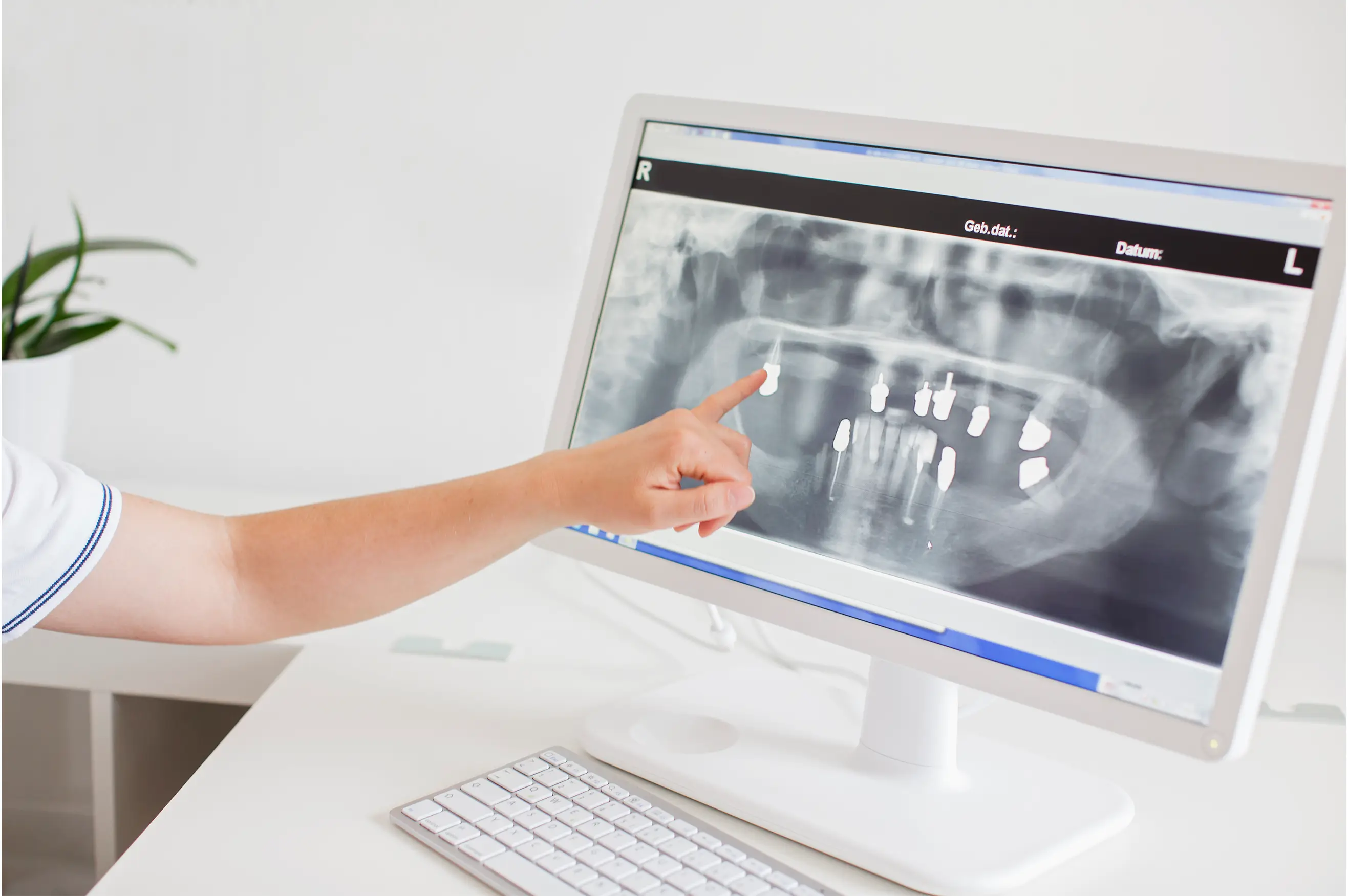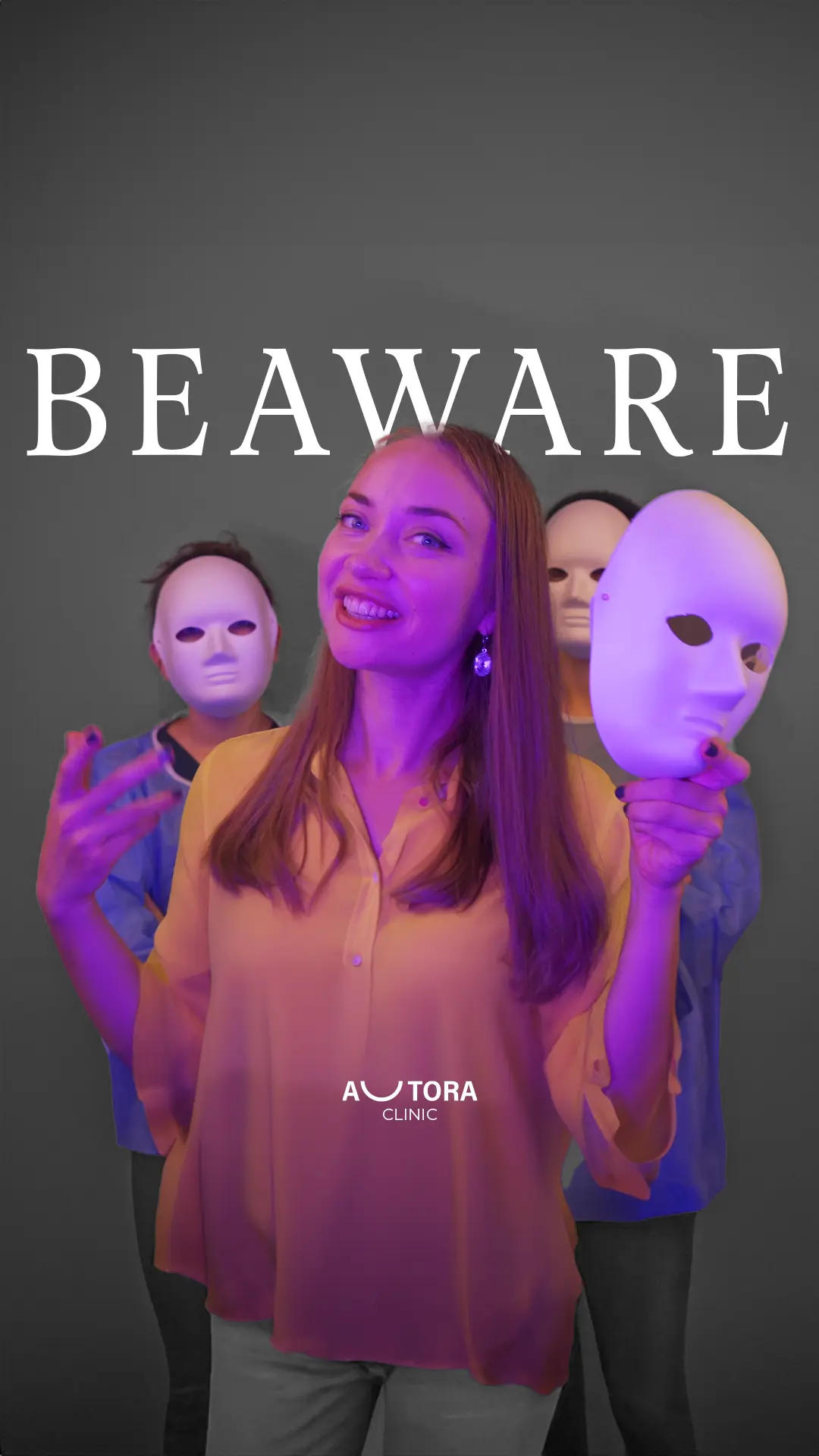Panoramic Dental X-Ray in Turkey: Cost, Safety, and Complete Guide for Patients
Panoramic Dental X-Ray in Turkey: Cost, Safety, and Complete Guide for Patients
Discover how panoramic dental X-rays in Turkey work, their cost, benefits, safety, and why they’re essential for complete oral care.
Table of Contents
- What Is a Panoramic Dental X-Ray?
- What Are Dental X-Rays Called and Why Are They Important?
- Types of Dental X-Rays
- How Often Is It Safe to Get Dental X-Rays?
- Dental X-Ray Radiation: Is It Dangerous?
- Panoramic Dental X-Rays During Pregnancy
- Are Panoramic Dental X-Rays Necessary?
- Panoramic Dental X-Ray Cost in Turkey
- Dental X-Ray Machine Technology in Turkey
- Are There Risks or Dangers of Panoramic Dental X-Rays?
- Panoramic X-Rays for Children
- Frequently Asked Questions (FAQ)
What Is a Panoramic Dental X-Ray?
A panoramic dental X-ray, also called an orthopantomogram (OPG), is a special type of dental imaging that captures your entire mouth in one image. Unlike a standard periapical or bitewing X-ray that shows only a few teeth, a panoramic X-ray displays all your teeth, upper and lower jaws, sinuses, and jaw joints in one wide view.
Dentists use panoramic X-rays to get a complete picture of your oral health. This imaging method helps detect problems that may not be visible during a regular exam, such as impacted wisdom teeth, bone loss, cysts, jaw fractures, or even early signs of oral cancer.
In Turkey, panoramic dental X-rays are a standard part of modern dental care — offered at affordable prices and using advanced digital X-ray machines that minimize radiation exposure while delivering clear, high-resolution images.
What Are Dental X-Rays Called and Why Are They Important?
Dental X-rays, also known as radiographs, are diagnostic images used by dentists to see areas of your mouth that aren’t visible during a regular checkup. They play an essential role in identifying problems early — before they become painful or costly.
The two main categories of dental X-rays are:
-
Intraoral X-rays – taken inside the mouth (e.g., bitewing and periapical X-rays).
-
Extraoral X-rays – taken outside the mouth (e.g., panoramic X-rays).
Panoramic X-rays fall into the extraoral category, giving a full, detailed view of your entire dental structure. This makes them especially useful before orthodontic treatment, dental implants, or wisdom tooth removal.
Read more: Dental implant in Turkey

Types of Dental X-Rays
Dentists use several types of X-rays depending on the patient’s needs:
-
Bitewing X-ray: Shows the upper and lower teeth in one area; ideal for spotting cavities.
-
Periapical X-ray: Focuses on one or two teeth and shows the entire tooth, including roots.
-
Occlusal X-ray: Captures the floor or roof of the mouth to track tooth development.
-
Panoramic X-ray: Provides a 360° view of all teeth, jaws, and sinuses in a single image.
Each X-ray type serves a different purpose, and your dentist decides which one is best for your situation.
How Often Is It Safe to Get Dental X-Rays?
According to experts, dental X-rays are very safe, especially with today’s low-radiation digital systems. The frequency depends on your oral health, age, and dental history.
-
Adults with healthy teeth: Once every 1–2 years.
-
Children or teens: Every 6–12 months, as their teeth and jaws are still developing.
-
Patients with dental issues: As often as needed to monitor progress or diagnose problems.
In Turkey, dental clinics follow strict European radiation safety standards, ensuring minimal exposure using protective lead aprons and thyroid collars.
Dental X-Ray Radiation: Is It Dangerous?
Many patients worry about radiation exposure from X-rays, but the levels are extremely low. A panoramic dental X-ray typically exposes you to about 10–20 microsieverts (µSv) — roughly equivalent to a few hours of natural background radiation you’re exposed to daily just by being outdoors.
For comparison:
-
A flight from London to Istanbul exposes you to around 20–30 µSv.
-
A chest X-ray exposes you to around 100 µSv.
In short, the radiation from a dental X-ray is minimal. However, pregnant women should always inform their dentist, as X-rays during pregnancy are generally postponed unless absolutely necessary.
Panoramic Dental X-Rays During Pregnancy
A panoramic dental X-ray in pregnancy is typically avoided unless there’s a dental emergency, such as an infection or severe pain that requires immediate diagnosis.
If an X-ray is necessary, dentists use lead aprons and thyroid shields to protect both mother and baby. Modern digital machines in Turkish dental clinics significantly reduce radiation exposure, making the procedure much safer than it was decades ago.
Are Panoramic Dental X-Rays Necessary?
In many cases, yes. Panoramic X-rays are crucial for comprehensive diagnosis and treatment planning. They help detect:
-
Impacted wisdom teeth
-
Bone abnormalities or infections
-
Sinus and jawbone issues
-
TMJ (jaw joint) disorders
-
Cysts or tumors in the jaw
Dentists in Turkey often recommend panoramic imaging before orthodontic treatments, implant placements, or major restorations to ensure accurate and safe procedures.
Read more: All-on-4 Dental Implants Turkey: Everything You Need to Know About the Life-Changing Smile Solution
Panoramic Dental X-Ray Cost in Turkey
One of the biggest advantages of dental care in Turkey is affordability without sacrificing quality. The cost of a panoramic dental X-ray in Turkey typically ranges from $20 to $50 USD, depending on the clinic and city.
Here’s a quick comparison:
|
Country |
Average Cost (USD) |
|
Turkey |
$20 – $50 |
|
USA |
$100 – $250 |
|
UK |
£40 – £100 |
|
Germany |
€60 – €120 |
If combined with a dental cleaning or full check-up, many Turkish clinics include the X-ray free of charge. Even panoramic X-rays for children are offered at discounted prices or as part of comprehensive treatment plans.
For patients without insurance, the cost of dental X-rays and cleaning in Turkey is still significantly lower than in most Western countries — often less than half the price.
_1761578229.webp)
Dental X-Ray Machine Technology in Turkey
Modern dental clinics in Turkey use digital panoramic X-ray machines that provide instant results. These devices offer:
-
Lower radiation exposure (up to 80% less than film X-rays).
-
Enhanced image clarity for accurate diagnosis.
-
Easy digital storage and sharing with specialists.
Some clinics even provide patients with a digital copy (PDF) of their panoramic X-ray for personal records or to share with their home dentist.
Are There Risks or Dangers of Panoramic Dental X-Rays?
Panoramic dental X-rays are generally safe, but as with any medical procedure, they should be used only when necessary.
Possible minor risks include:
-
Slight radiation exposure (very low).
-
Mild discomfort from holding still during the scan.
The benefits far outweigh the risks, as these X-rays can reveal serious oral conditions early, saving time, pain, and money in the long run.
Read more: Tooth Replacement After Extraction: Best Options, Costs in Turkey & Healing Tips
Panoramic X-Rays for Children
Child dental X-rays help monitor tooth growth, detect cavities, and ensure proper jaw alignment. Panoramic X-rays are particularly useful in pediatric dentistry for identifying issues like:
-
Missing or extra teeth
-
Misalignment
-
Early signs of decay
-
Growth abnormalities
Because children’s tissues are more sensitive, dentists use ultra-low-radiation settings and protective gear. In Turkey, pediatric dental clinics are highly trained in using panoramic imaging safely for kids.
Frequently Asked Questions (FAQ)
What are dental X-rays called?
They’re called dental radiographs — images used by dentists to diagnose oral health conditions.
How often is it safe to get dental X-rays?
For most adults, once every one to two years; for children, once every 6–12 months, depending on risk factors.
What are the two types of teeth X-rays?
Intraoral (inside the mouth) and extraoral (outside the mouth). Panoramic X-rays fall into the extraoral category.
Can I refuse dental X-rays?
Yes, but your dentist might not be able to diagnose certain problems without them. Discuss any concerns openly.
How much radiation is in a panoramic dental X-ray?
About 10–20 microsieverts — less than what you’d get from a short airplane flight.
How often should panoramic X-rays be taken?
Usually every 3–5 years, or sooner if you’re undergoing orthodontic or implant treatment.
The Bottom Line
A panoramic dental X-ray in Turkey is an affordable, safe, and effective way to get a full view of your oral health. It’s an essential diagnostic tool for planning treatments like implants, braces, or oral surgery.
Thanks to Turkey’s advanced dental technology and competitive pricing, both locals and international patients can access world-class care at a fraction of the cost. Whether you’re concerned about dental X-ray radiation, cost, or necessity, modern clinics in Turkey ensure your comfort, safety, and peace of mind — helping you smile with confidence again.
Sources:
- https://www.healthline.com/health/dental-x-rays
- https://my.clevelandclinic.org/health/treatments/21417-dental-x-rays
- https://www.webmd.com/oral-health/guide/dental-x-rays
Fill it out to get your free consultation
Innovation & Precision In Every Implant
We use only reputable, high-quality implants designed for long-term durability
BioTec Dental Implants


Hiossen Dental Implants


Straumann Dental Implants


Nobel Biocare Dental Implants


MegaGen Dental Implants








